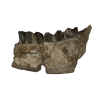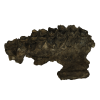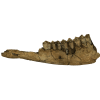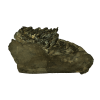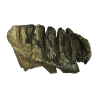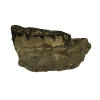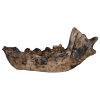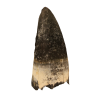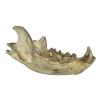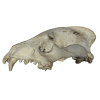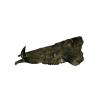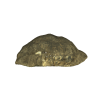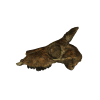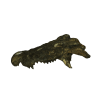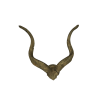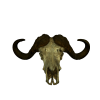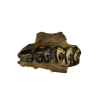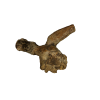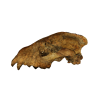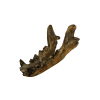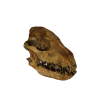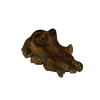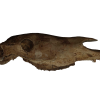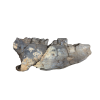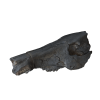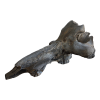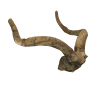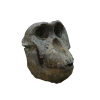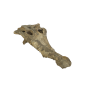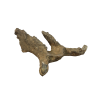This specimen is the upper dentition on the left hand side of a piece of a skull belonging to a juvenile Deinotherium bozasi. The teeth present in this specimen are the deciduous upper second premolar through to the deciduous upper fourth premolar (lt dP2-dP4).
Deinotheres are an extinct family of proboscideans that specialized in browsing. Unlike the other elephants that existed at this time, Elephas and Loxodonta, the Deinotheres retained tusks in their mandibles (lower jaw) rather than in their maxillae. The deinotheres have distinctive low crowned bilophodont cheek teeth but the deciduous P4 and M1 have three lophs (trilophodont). You can see in this specimen that the P4 has three lophs.
Deinotheres became extinct in Eurasia during the Pliocene but were present in Africa through to the early Pleistocene. In the Turkana Basin the Deinotheres are represented by the large Deinotherium bozasi although they are quite uncommon in the fossil record here. This might be because the fossil deposits here are more representative of open habitats rather than the densely vegetated forest habitats that the Deinotheres are likely to have inhabited.






